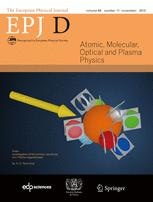Dec 1 2016
 Credit: Springer
Credit: Springer
An Austrian team has developed a new technique based on physical vapor deposition, to upscale the quantity of coating without affecting the homogeneity and quality of the film.
The research details have been published in EPJ D. In this study, Andreas Eder from Vienna University of Technology and colleagues also created a model that can predict the film thickness. This represents a huge breakthrough for industrial materials, as earlier approaches rely on optical measurement after the coating had been deposited.
As this coating system can implement a plasma close to the granular substrate, it opens the door to new surface treatment and modification possibilities.
Coating granular materials is a science in itself. A coating technique based on plasma vapor deposition, known as magnetron sputtering, formerly only coated up to 20 ml of granular material. Currently, the authors have up-scaled the system and improved the geometry for coating up to one liter of granular material, regardless of particle size or shape.
To achieve this, they use a special coating vessel engineered to prevent the coating material clumping together. They also built a semi-empiric model to predict the film thickness, which takes into consideration major factors such as the trickling behavior or surface area exposed to the vapor beam, which have been approximated in the model. They noticed that their results were consistent with conventional thickness-measurement techniques.
Applications are expected for the many granular materials used in industry, including, for instance, a novel hydrogen-storage system, which is used to store hydrogen in hollow glass spheres. By applying heat to the spheres, the hydrogen stored in microbeads can be discharged. Thanks to a chemical reaction stimulated by a catalyst, the new technique helps to meet the challenge of applying heat to the beads, which has to be applied to the surface of the sphere.
Reference:
A. Eder, G.H.S. Schmid, H. Mahr, and C. Eisenmenger-Sittner (2016),
Aspects of Thin Film Deposition on Granulates by Physical Vapor Deposition,
European Physical Journal D 70:207, DOI: 10.1140/epjd/e2016-70435-7